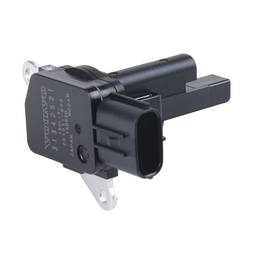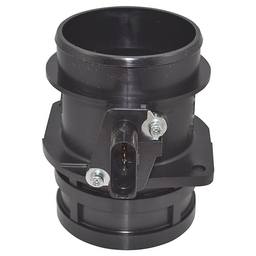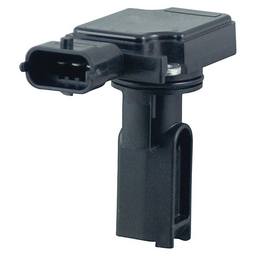Modern internal combustion engines are complex machines. Long gone are the days when engines were analog and could be tuned using basic tools. These days your average engine has thousands of times more processing power than Apollo 11 computer had, and that thing put two people on the moon. Mass Airflow Sensor is a part of what is essentially a massive network of sensors and nodes your car’s computer utilizes. Here’s what a mass airflow sensor is, how it works, and how to spot a faulty one.
What is a Mass Airflow Sensor?
There are two things an engine needs to run – fuel and air. The ECU in modern cars (post-1980s, so almost every vehicle on the road) is continuously working to find the right mix of air and fuel depending on the engine’s needs and any given moment.
Your car knows how much fuel it’s delivering into the intake manifold, judging by the fuel pressure produced by the fuel pump. However, measuring the amount of air entering the plenum requires a more delicate tool – the Mass Airflow Sensor.
Mass Airflow Sensor or MAF is a sensor measuring the amount of air that’s entering the engine. You’ll find the MAF sensor between the air filter and the intake manifold on most cars. The way a MAF works is pretty simple yet ingenious.
How does a MAF Sensor Work?
If you were to pull apart a MAF sensor, you’d find that it consists of a piece of wire and a temperature sensor that’s sitting right next to it. That piece of wire is heated when the engine is running. The temperature sensor installed right next to it measures the air temperature surrounding the wire.
When the car is idling, the air volume that’s rushing by these two components is low. As a result, there isn’t much change in air temperature around the sensor, which tells the ECU how to trim the air/fuel mixture.
Once you start moving and the air begins to rush past the sensor, it will notice the change and pass on the ECU information.

Symptoms of a Faulty MAF Sensor
Symptoms of faulty MAF sensors vary depending on whether the sensor is dead or if it’s just dirty. Once a MAF sensor fails, the engine no longer knows how much air is entering the intake in real-time and is left blind. That’s when the trouble starts.
Here’s a brief list of the most common issues caused by a faulty MAF sensor:
- Failure to start
- Rough idle
- Failure to accelerate
- Hesitant gas response
- Bad fuel economy
Which one of these you’ll encounter depends on the make and model of your car, as well as the nature of the problem. In more severe cases, MAF failure will trigger the check engine light, at which point you’ll need to scan the ECU using a diagnostic tool.
Scanning for error codes is the best way to get a sense of going with the MAF sensor. You’ll usually run into P0100–P0104 codes when the mass airflow sensor sends readings outside nominal values.
Troubleshooting Tips
Before we get to cleaning and repair, we have to mention that it’s not always the MAF causing fuel trim issues. Remember how the MAF sensor sits between the air filter and the intake manifold? Sometimes you’ll get a hairline fracture on the plastic intake tube that connects the MAF sensor housing and the intake manifold.
If the crack is large enough to cause a vacuum leak, the readings collected by the MAF sensor and the actual volume of air that enters the engine won’t match up. This could also cause some faulty MAF symptoms, even though your mass airflow sensor is perfectly fine.
Cleaning the MAF Sensor
MAF sensors are incredibly delicate. So much so that touching the wire or the temperature sensor next to it could ultimately destroy them. To clean a MAF sensor, you’ll need a can of Mass Airflow Sensor cleaner. Don’t use brake cleaner or similar agents as they will leave residue behind.
The whole reason why there’s a special cleaning agent designed specifically for this job is the fact that it leaves no residue on the hot wire.
That being said, the sensor needs to come off the car before you start cleaning it. Disconnect the wiring and remove the housing from the intake. Next, take the cleaner and spray the hot wire from a distance of approximately 5-10 inches. Spray the hot wire for a few seconds and then let it dry completely. Repeat this process one more time.
It’s important that you let the sensor dry completely before installing it back on the intake. If you have a diagnostics tool that can read sensor values, you can compare the readings before and after cleaning to see if that was the issue.
How to Replace a Faulty Mass Airflow Sensor?
MAFs are rarely ever repaired. In most cases, you’ll have to replace the entire unit. The process of replacing a mass airflow sensor is pretty simple. Although it differs slightly depending on your car’s make and model, it usually involves unplugging the electrical connections, loosening up two clamps that hold the housing in place, and removing the entire MAF sensor housing.
The installation process is the same, only in reverse. One thing to note, though – every MAF sensor is directional. You’ll usually find an arrow printed or stamped into the sensor housing that will tell you which way the sensor should go.
Get a Quality MAF
MAF sensors don’t fail too often, but it’s important that you get a genuine or OEM replacement part when they do. If you own a European car, the chances are that we carry the sensor you need. You can check by heading over to our store and using our vehicle selection tool to find your car’s make and model. Once you input your data, our system will show you all the products that match your inquiry.






